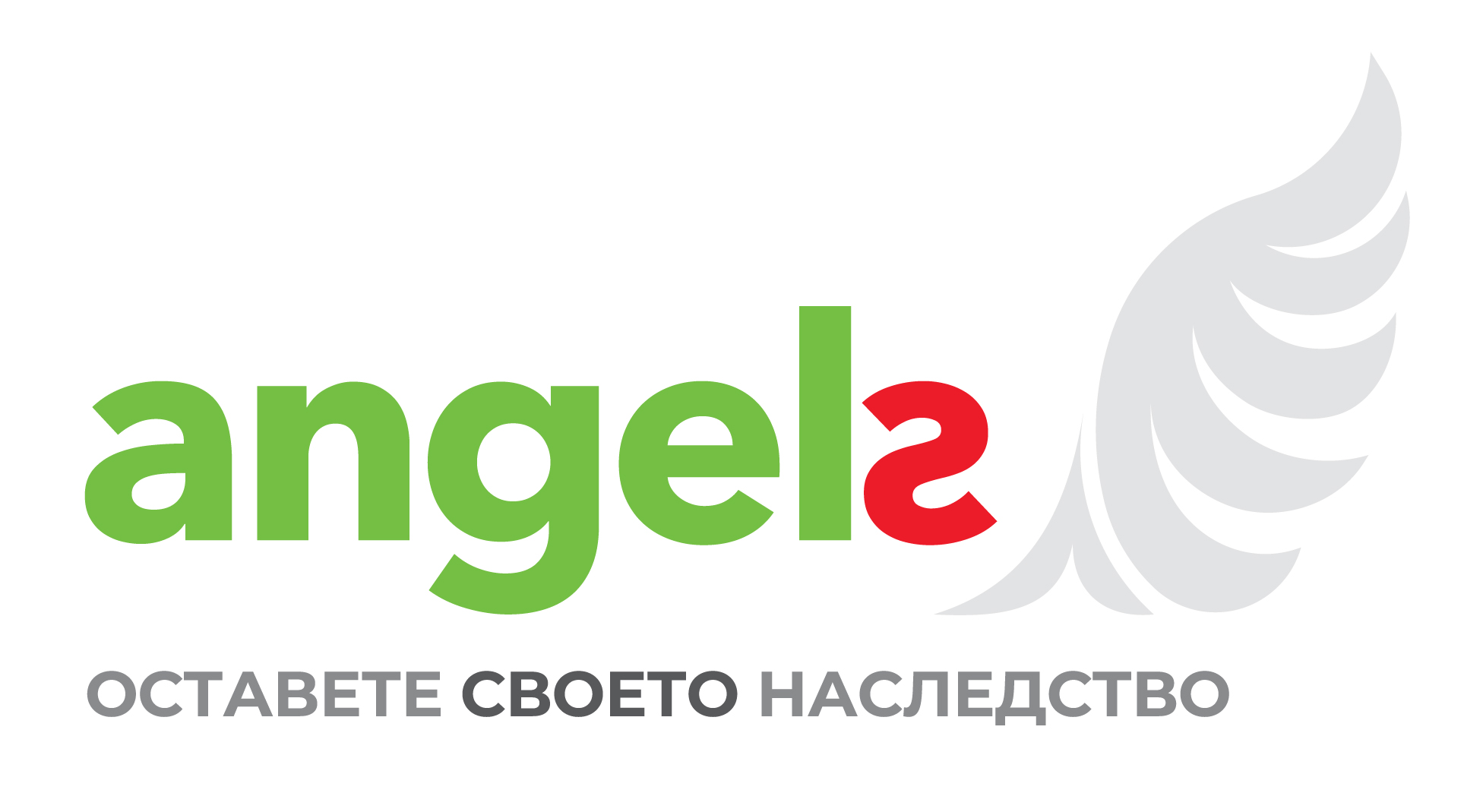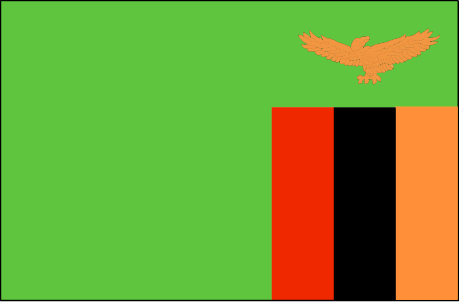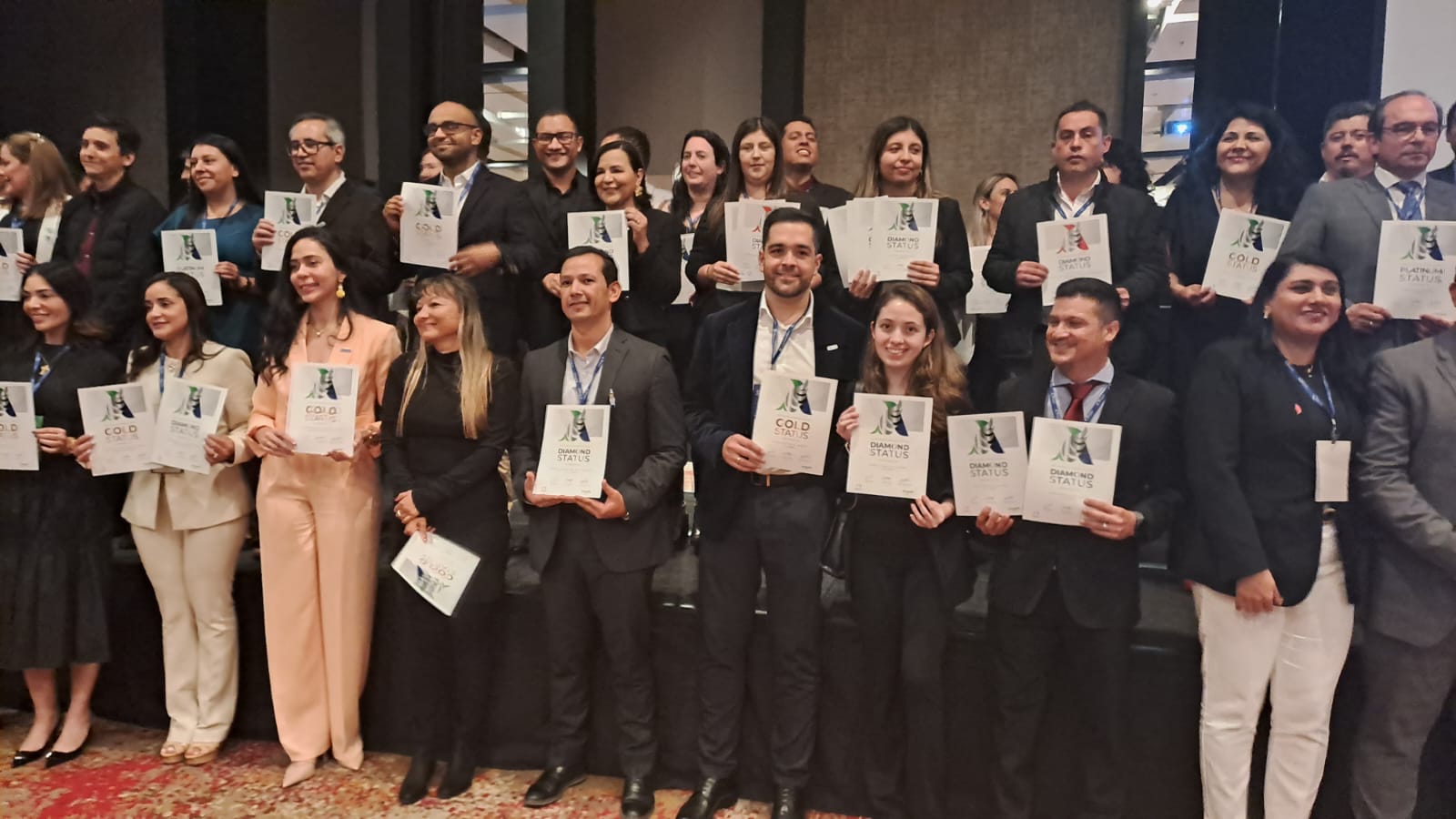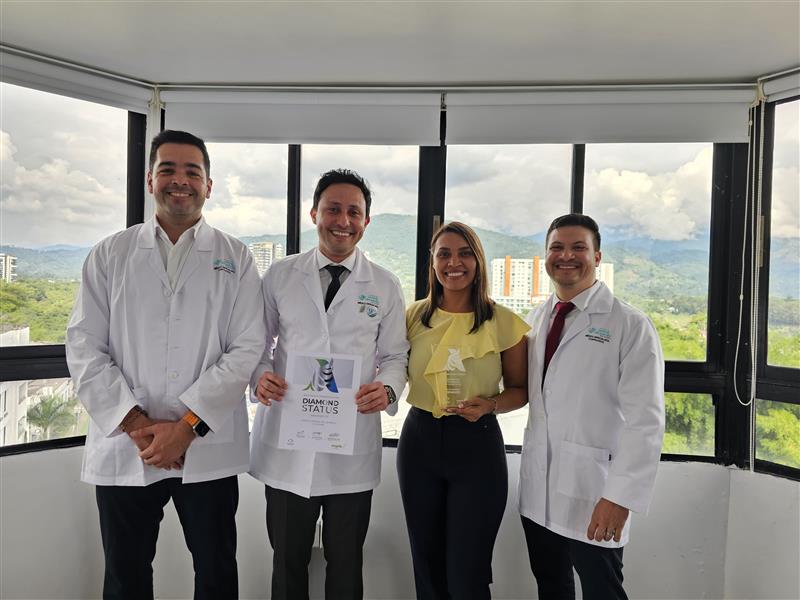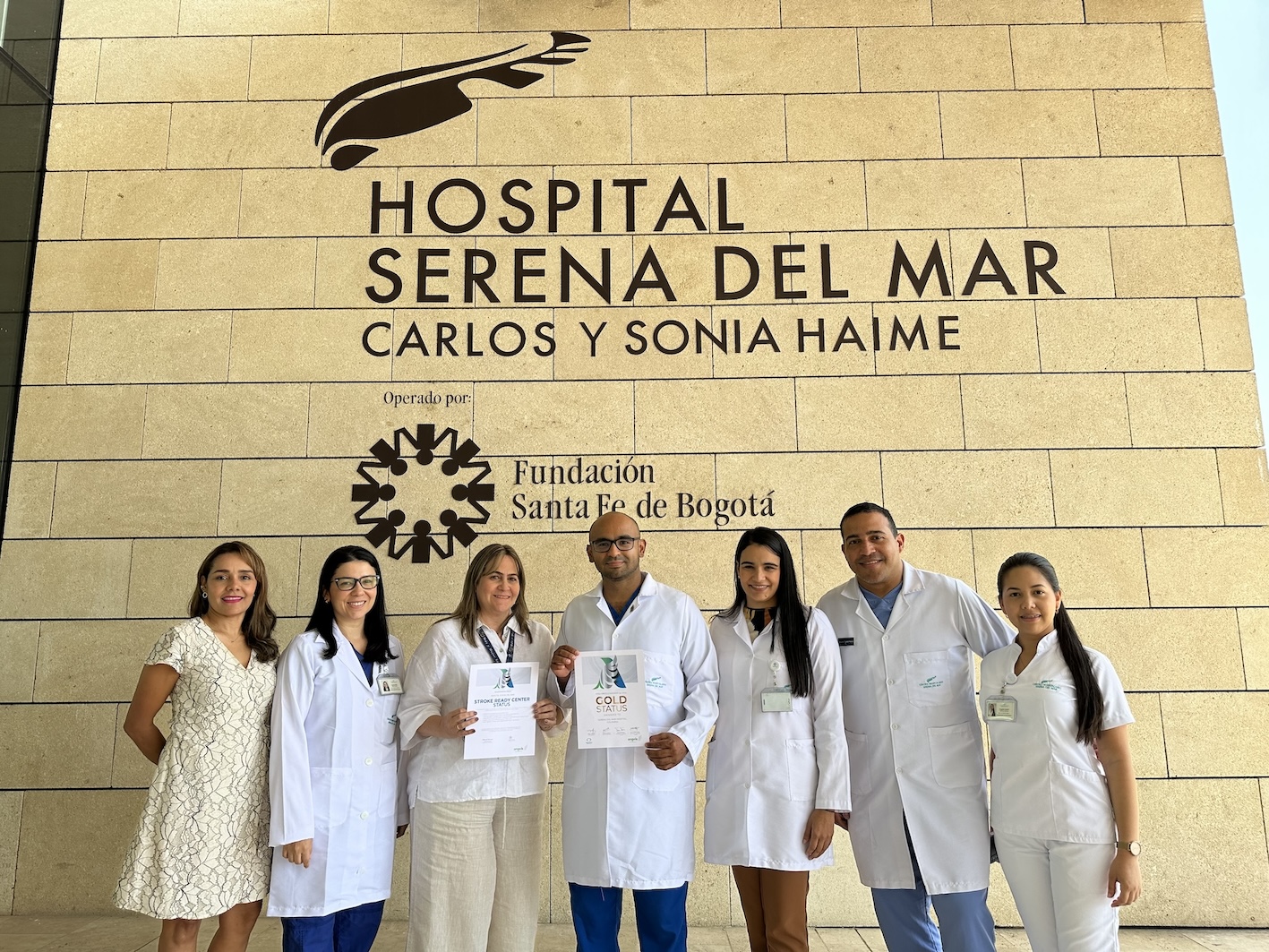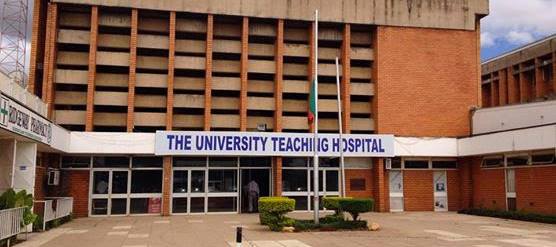
Замбия е държава в Южна Централна Африка, чието население от 18 милиона души е изправено пред голямо бреме от неврологично заболяване. Преди 2018 г. всички неврологични грижи бяха предоставени от четирима невролози-изгнаници, които бяха базирани в Замбия, някои само за част от годината. С такъв ограничен достъп до неврологични услуги, повечето пациенти с неврологични разстройства са били обгрижвани от неспециалисти и не е имало специализирано неврологично стационарно обслужване никъде в страната.
През октомври 2018 г. обаче стартира първата следдипломна програма за обучение по неврология и първата стационарна служба по неврология в Замбия под ръководството на д-р Диана Сейлър (Джон Хопкинс) в Университетската болница за обучение (УТХ) в столицата Лусака. На нея се ползва подкрепата на Медицинския университет в Замбия, Министерството на здравеопазването на Замбия и Програмата за специално обучение на Замбийския колеж по медицина и хирургия.
През четирите години оттогава тази програма е обучила четирима възрастни невролози и двама педиатрични невролози. Още двама възрастни невролози ще завършат обучението си през октомври, а един възрастен невролог се е върнал от обучението в университета в Кейптаун и се е присъединил към консултантския екип на UTH.
Още петима лекари в момента преминават обучение по неврология, а допълнителни бъдещи невролози завършват следдипломното си обучение по медицина, предпоставка за присъединяване към програмата.
Накратко, очаква се до 2023 г. в Замбия да има поне 15 невролози, обучени на местно ниво, като броят им се очаква да нараства ежегодно.
Нашият екип успя да се възползва от този експоненциален растеж в общия неврологичен капацитет, за да постигне едновременно значителни ползи в грижите за инсулт, разработването на системи за инсулт и изследванията за инсулт. Справихме се с този проблем по няколко начина.
Оптимизиране на диагнозата и управлението на инсулта
Първо, ние се фокусирахме върху оптимизиране на диагнозата и управлението на инсулта. Фокусирането върху осигуряването на строг клиничен курс за нашите следдипломна квалификация по неврология ни помогна да усъвършенстваме диагнозата инсулт, в резултат на което имитациите на инсулт бяха по-лесно идентифицирани, а етиологиите на инсулта по-задълбочено обмислени.
Това от своя страна доведе до по-добро управление на рисковите фактори за инсулт и започване на специфични за пациент вторични схеми за превенция на инсулт.
Нашият екип по неврология също се фокусира върху съвместната работа по интердисциплинарен начин, за да обсъди и осигури по-добра грижа при инсулт. Това включва повдигане на главата на леглата на пациентите за предотвратяване на аспирационна пневмония, свеждане до минимум на използването на уринарни катетри и гарантиране, че пациентите се обръщат често. Тези усилия са довели до значителни постижения в краткосрочните резултати от инсулт. Например, проучване от 2012 г. на инсулт в UTH установи стационарна смъртност от 40%1. След въвеждането на програмата за обучение по неврология през 2018 г. този брой намаля до 24%2.
Намиране на доказателства, които да ръководят нашата клинична практика
Второ, ние се фокусирахме върху намирането на доказателства, които да ръководят нашата клинична практика, тъй като тя се отнася до клинични въпроси, които са често срещани в нашата среда. Например, за разлика от повечето настройки с високи доходи, повечето от нашите пациенти с инсулт не могат да имат достъп до невроизображения своевременно поради финансови ограничения или липса на невроизобразяване в определено съоръжение. Това означава, че повечето от нашите пациенти се подлагат на КТ сканиране повече от 24 часа след приема, а 10-15% изобщо нямат достъп до невроизобразяване. Това означава, че често вземаме критични клинични решения за лечението, включително цели за кръвно налягане и дали да започнем или не антитромбоцитна терапия, без да знаем дали пациент има исхемичен или хеморагичен инсулт.
Бяхме изненадани, но развълнувани да открием, че наистина съществуваше доста съществена база от доказателства за този клиничен сценарий на „неизвестен инсулт“ и го използвахме, за да ръководим нашата клинична практика и да предложим рамка за други хора в подобни клинични условия.3
Събиране и анализ на данни
И накрая, ние целенасочено се доближихме до развитието на нашите нововъзникващи услуги за инсулт по основан на данни, систематичен и научен начин, като събирахме данни от нашата рутинна клинична практика. Когато се анализират, тези данни ни позволиха да разберем по-добре епидемиологията, с която се сблъскваме в нашите клинични услуги, включително пропорцията на исхемичните и хеморагичните инсулти и най-често срещаните рискови фактори за инсулт сред нашите пациенти.2,2,4
Тези данни също така ни помогнаха да разберем по-добре нашите резултати за пациент и двигателите на тези резултати5, което от своя страна ни помогна да се съсредоточим върху разбирането и намесата в променливи фактори, свързани с лоши резултати, като аспирационна пневмония.6 Те също така информираха нашите текущи усилия за по-добро разбиране на смъртността след изпразване и как можем да подобрим прехода от болница към дом за нашите пациенти. По този начин нашето изследване се извършва като част от и интегрирано с нашите клинични грижи, а нашите резултати от изследването директно информират за подобренията в нашите текущи клинични грижи.
Въпреки че нашият екип вече е постигнал много за сравнително кратък период от време, имаме много по-амбициозни цели и проекти, за които сме развълнувани и към които се стремим. Настоящите усилия включват:
- изследователски проекти за по-добро използване на болногледачите до леглото в рутинните грижи за пациенти с инсулт за предотвратяване на усложнения в болницата и подобряване на резултатите
- проучвания за разбиране и подобряване на смъртността след изпразване
- разработване на основан на доказателства център за инсулт, който е осъществим в нашата среда с ограничени ресурси.
В дългосрочен план се надяваме, че нашите данни и усилия за застъпничество ще доведат до национални насоки за лечение на инсулт и в крайна сметка до достъп до тромболиза и тромбектомия за нашите пациенти.
Въпреки че много за бъдещето е несигурно, едно нещо, което знаем със сигурност е, че последните четири години на неврологичен растеж в Замбия ни показаха, че толкова много е възможно с упорита работа, изграждане на капацитет, подход, основан на данни, и най-важното, отличен екип, състоящ се от ориентирани към пациент, академично ориентирани, мотивирани невролози!
Тази статия се появява за първи път в бюлетина на Африканската организация по инсулт, ноември 2022 г.
Атаджанов М, Мукомена PN, Лакхи S, Рос ОА, Меша JF. Характеристики на инсулта и резултати на възрастни пациенти, приети в Университетската учителска болница, Лусака, Замбия. Отворен журнал за обща и вътрешна медицина. 2012;5:3-8.
Nutakki A, Chomba M, Chishimba L, Zimba S, Gottesman R, Bahouth M, *Saylor D. Рискови фактори и резултати на хоспитализирани пациенти с инсулт в Замбия. J Neurol Sci. 2021;424:117404.
Prust M, Saylor D, Zimba S, Sarfo FS, Shrestha GS, Berkowitz A, Vora N. Болнично лечение на остър инсулт от неизвестен тип в ограничени от ресурси настройки. Инсулт. 2022;53:e108-e177.
Zimba S, Nutakki A, Chishimba L, Chomba M, Bahouth MN, Gottesman RF, Saylor D. Рискови фактори и резултати от инсулт, свързан с ХИВ в Замбия. СПИН. 2021;35:2149-2155.
Nutakki A, Chomba M, Chishimba L, Mataa MM, Zimba S, Kvalsund M, Gottesman RF, Bahouth M, Saylor D.* Прогнози за смъртността в болницата и 90-дневната след инсулта в Лусака, Замбия. J Neurol Sci. 2022; 437:120249.
Prust ML, Nutakki A, Habanyama G, Chishimba L, Chomba M, Mataa M, Yumbe K, Zimba S, Gottesman RF, Bahouth MN, *Saylor D. аспирационна пневмония при възрастни, хоспитализирани с инсулт в голяма академична болница в Замбия. Neurol Clin Pract. 2021;11:e840-e847. doi:10.1212/CPJ.0000000000001111
